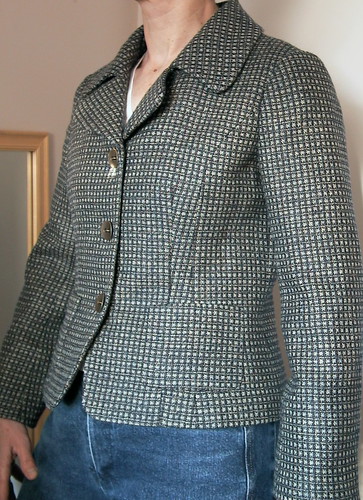Private Interest Foundations
The private foundations were born some years ago in Panama , in order to give the offshore users a new approach, a more civil and familiar approach.
They have the same Tax and Registry principles, but with a civil oriented system.
The foundations can sign and negotiate commercial contracts eventually and they are not subject to income tax when the income was produced outside Panamanian territory.
The Panama Private Foundation (hereinafter known as PIF) has its origins in the Law 25 of 1995, which in turn was inspired in the PGR or better known as the “Liechtenstein Persons and Company Act”, which contains one of the first references to the private non profit foundations. In Panama, this and the most recent innovations in the Anglo-Saxon Trust enabled the creation of the Private Foundation utilizing the best features and characteristics of both worlds.
A PIF is a legal entity that can be created by either a natural person or a corporation that later transfers part or all of his/her assets to the Private Foundation so they can be managed and protected in favour of the Beneficiaries.
Among the features of the Panamanian Private Foundations we find:
- Quick registration 24-72 hours;
- They provide a fiduciary structure for the orderly transfer and disposition of assets to beneficiaries upon the death of the Founder, keeping control of the assets during lifetime;
- They may be established to have effects from the date of their constitution or after the death of the Founder; According to Law 25 of 1995, inheritance laws that apply in the domicile of the Founder or the Beneficiaries, shall not be effective against the Foundations assets nor may these laws affect the validity or performance of the Foundations objectives;
- Foundations are established to carry the specifics goals set out in the Foundation Charter and may additionally undertake sporadic commercial activities, exercise rights pertaining to their holdings, own property, contract obligations and take part in administrative or judicial proceedings.
- A Private Interest Foundation should be established with a patrimony destined to fulfill its objectives, which shall be no less than US$10,000.00.
- Said patrimony may be increased by additional contributions of the Founder or third parties and does not have to paid in part or in full before the incorporation;
- The assets of the Foundation become legally independent and do not form a part of the private estate of the Founder. Such assets are not sizeable and may not be subject to any precautory action or measure, unless such action or measure pertains to obligations incurred or damages arising from the fulfillment of the Foundations objectives.
Notwithstanding the creditors of the Founder or of a third party shall have the right to contest the contribution or transfer of assets to a foundation when such transfer constitutes an act in fraud of the creditors. The rights and actions of such creditors shall lapse at the expiration of three (3) years, counted from the date of the contribution or transfer of the assets to the foundation was done.
According to article 27 of Law 25 of 1995, Private Interest Foundations are exempt from payment of any taxes, contributions, duties, liens or assessments of any kind arising from the acts of constitution, amendment or extinction of the same, as well as acts of transfer or encumbrance of the Foundations assets and the income arising thereof, when related to:
- Assets located abroad;
- Money deposited by natural or juridical persons whose income does not derive from a Panamanian source is not taxable in Panama for any reason;
- Shares or securities of any kind issued by corporations which income is not derived from a Panama source, or which are not taxable for any reason, even when such shares or securities are deposited in the Republic of Panama.
- The transfer of unmovable property, titles, certificates of deposits, assets, funds, securities or shares carried out by reason of the fulfillment of the objectives of the foundation or the termination of the same, in favor of relatives within the first degree of consanguinity or the spouse of the Founder shall also be exempted from all Panama taxes.
Among the most important uses of the Panamanian Private Foundations we find:
- Family and family office support
- For Tax purposes
- For the protection and management of assets
- For educational purposes Testamentary purposes
- For life annuity purposes
- For charitable purposes
- To receive and manage capital and titles
- For the purpose of serving as guarantee or collateral
- For the management of insurance.
We must comment that several or all uses mentioned above can be given to a particular PIF, there are no restrictions as to the objects or uses one PIF can be given. For example, one PIF can be created to protect assets, but also with a testamentary use or in any case, with all the above-mentioned uses. However, a PIF cannot engage in commercial or for profit activities as a day-to-day activity.
Panama
Panamanian offshore corporations are an easy vehicle to negotiate and close deals.
The simple and yet formal provisions of the Law, render the users to trust the system. The amendments necessary to close one deal are quickly done by registering them at the Public Registry Office, and since it is a government institution, the certificates and Apostilles are easy to obtain in order to sign a contract in a short period of time.
Directors of the companies do not necessarily have to be shareholders and vice versa. Panamanian companies are not bound to issue shares. Powers of Attorneys may or may not be registered in the Public Registry Office.
For over seventy five (75) years the Panamanian offshore corporations has been recognized worldwide as a suitable offshore vehicle and with the proper legal advice can be utilized in a diversity of structures to conduct international business, asset protection, and estate planning, among others.
Among the most important features of the Panamanian offshore corporations we can mention:
- Quick registration in 24 to 48 hours.
- The Panamanian offshore corporations can be registered notwithstanding the nationality of its directors or shareholders.
- The income produced by a Panamanian offshore corporations outside the territory of the Republic of Panama is exempt of paying Income Tax in Panama.
- The capital of the company does not have to be paid partially or fully at the moment of incorporation.
- There is no obligation to file annual reports, financial statements or sworn income declarations, always that the company does not generate Panamanian sourced income.
- Legal entities of any country can be appointed as directors, officer or shareholder.
- There is no obligation to undertake annual meetings of the Board of Directors or Shareholders.
- The directors and shareholders can meet in person, by Proxy, phone or by any other electronic means.
- Three (3) directors are required, either physical persons or legal entities of any nationality.
- The officers (usually a President, a Secretary and a Treasurer) not necessarily have to be directors and one person can occupy one or more or all offices.
- The officers can be either physical persons or legal entities.
- The shares can be issued in nominative or bearer form.
- In any case, the name of the shareholder is not required to be registered at the Public Registry, so confidentiality is ensured.
- The corporate books can be kept in any part of the world and can be managed by electronic files or program.
- A Panamanian offshore corporations can do transactions and own assets in any part of the world, without having the obligation to maintain assets in the Republic of Panama.
- The Panamanian offshore corporations can undertake any type of legal business activity in any part of the world.
- The use of the Apostille is permitted.
Among the most important uses of the Panamanian offshore corporations we can find:
- As a holding entity for shares, bonds, bank accounts, term deposits, investment projects or any other financial or commercial title.
- Owner of shares in other companies, be them Panamanian or foreign.
- Owner of property, such as apartments, lots, houses or any other asset, be them personal or real estate.
- Manager or promoter of international commercial transactions.
- International lease of aircraft, vehicles, machinery, vessels and others.
- Instrument to receive and deliver loans in cash or commissions for products and services.
- Marketing and promotion of products and services.
- Other financial or commercial activities.
Belize
Belize 's modern and up-to-date offshore legislation provides maximum flexibility in global asset protection and tax and investment planning.
Particular features of the Belize international business companies are:
- Registration is quite fast as you can have your company registered in one (1) hour.
- Conducts its trading and business outside of Belize.
- Tax exempt from, the payment of all forms of local taxation, the payment of stamp duties for transactions in respect of its shares and debt obligations or other securities.
- Absence of exchange control.
- Disclosure of the beneficial owner(s) is not required;
- share register may be inspected only by a shareholder;
- nominee shareholders and bearer shares are permitted;
- assets are protected from confiscation or expropriation orders or similar actions by foreign governments.
- Security and Confidentiality.
- Only the Memorandum and Articles of Association are required for public records;
- the registration and deregistration of Registers of Directors, Members, and Mortgages and Charges is optional.
- No minimum capital is required.
- No audit of accounts is required.
- No filing of annual returns is required.
- Only one shareholder and one director are required, who may be a legal entity.
- No company secretary is required.
- No annual general meeting is required, meetings may be held outside of Belize , and attendants may be present therein by telephone or other electronic means.
- Shares may be issued with or without par value and in any currency.
- Re-domiciliation into and out of Belize is permitted, registration in any foreign language is permitted.
Additional reporting compliance may be required from entities doing business with local clients inside said jurisdictions, as well as from shareholders and/or beneficiaries resident in some jurisdiction. Advice from a tax attorney and accountant in your country of citizenship and residence must be sought before using offshore entities.




































